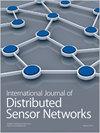一种考虑货物定向和稳定性的三维离线装箱算法
IF 2.5
4区 计算机科学
Q3 COMPUTER SCIENCE, INFORMATION SYSTEMS
引用次数: 0
摘要
箱子包装问题可以概括为将一批具有指定数量不同物理特性的货物放入指定的箱子中。假设将一批不同尺寸的长方体货物装载到一批相同类型的箱子中,货物具有定向和稳定性等约束。以空间利用率倒数的均值为目标函数,设计了一种将遗传算法与禁忌搜索算法相结合的混合遗传算法。针对包装方案中包装序列的信息和盒子的旋转状态,设计了一种基于随机密钥的两阶段实数编码和解码方法,并设计了基于部分随机密钥和均匀交叉的交叉运算。为了将优化算法搜索到的解转化为实际的装箱方案,利用左下角的定位规则、最小空间的空间选择规则以及剩余空间的划分和合并规则,设计了一种启发式装载算法。前期采用轮盘赌方法增强全局搜索能力,后期采用最优保存策略加快算法收敛速度。为了弥补遗传算法局部搜索能力弱、收敛速度慢的缺点,在遗传算法中采用禁忌搜索算法作为变异运算。生成中的解被用作禁忌搜索算法的初始解,并执行搜索过程。最后,本文在BR数据集中的6组弱异构和强异构数据上测试了所提出的混合算法。结果证明,该算法可以减少盒子的使用。本文章由计算机程序翻译,如有差异,请以英文原文为准。
A 3D Offline Packing Algorithm considering Cargo Orientation and Stability
The box packing problem can be generalized as placing a batch of cargos with a specified number of different physical characteristics into a specified box. Suppose that a batch of cuboid cargos of different sizes are to be loaded into a batch of boxes of the same type, the cargos have constraints such as orientation and stability. Taking the mean value of the reciprocal of space utilization as the objective function, this paper designs a hybrid genetic algorithm that combines genetic algorithm and tabu search algorithm. Aiming at the information of the packing sequence and the rotating state of the box in the packing scheme, a two-stage real number encoding method and decoding method based on random keys are designed, and a crossover operation based on partial random keys and uniform crossover is designed. In order to convert the solution searched by the optimization algorithm into the actual packing scheme, a heuristic loading algorithm is designed while using the positioning rule of the lower left corner, the space selection rule of the minimum space, and the division and merging rules of the remaining space. In the early stage, the roulette method was used to strengthen the global search ability, and in the later stage, the optimal preservation strategy was used to speed up the algorithm convergence. To make up for the shortcomings of the genetic algorithm’s weak local search ability and slow convergence speed, the tabu search algorithm was used as a mutation operation in the genetic algorithm. The solution in the generation is used as the initial solution of the tabu search algorithm, and the search process is carried out. Finally, this paper tests the proposed hybrid algorithm on 6 groups of weakly heterogeneous and strongly heterogeneous data in the BR dataset. The results prove that the proposed algorithm can reduce the usage of boxes.
求助全文
通过发布文献求助,成功后即可免费获取论文全文。
去求助
来源期刊
CiteScore
6.50
自引率
4.30%
发文量
94
审稿时长
3.6 months
期刊介绍:
International Journal of Distributed Sensor Networks (IJDSN) is a JCR ranked, peer-reviewed, open access journal that focuses on applied research and applications of sensor networks. The goal of this journal is to provide a forum for the publication of important research contributions in developing high performance computing solutions to problems arising from the complexities of these sensor network systems. Articles highlight advances in uses of sensor network systems for solving computational tasks in manufacturing, engineering and environmental systems.

 求助内容:
求助内容: 应助结果提醒方式:
应助结果提醒方式:


